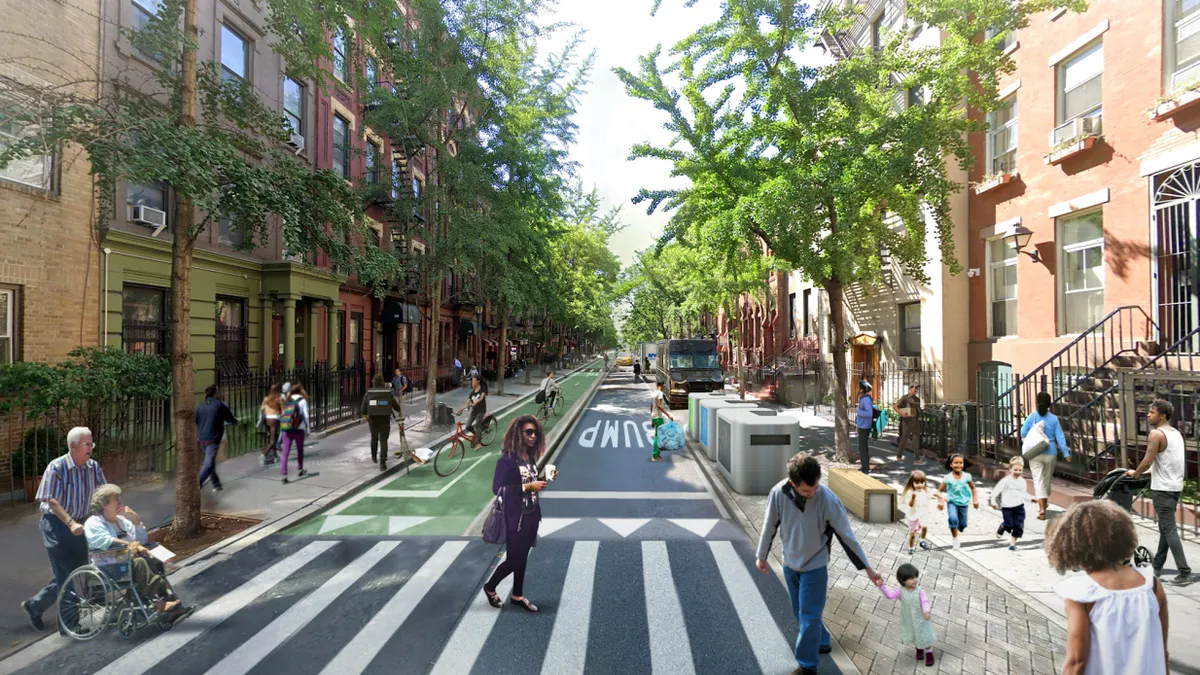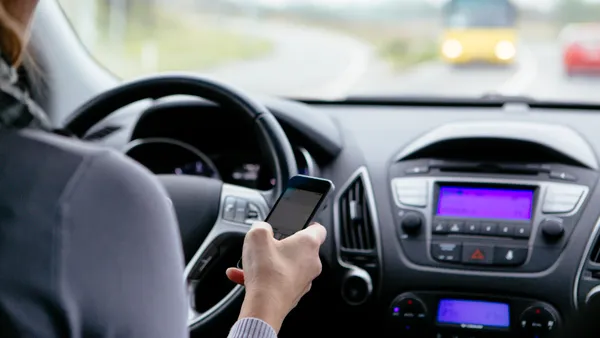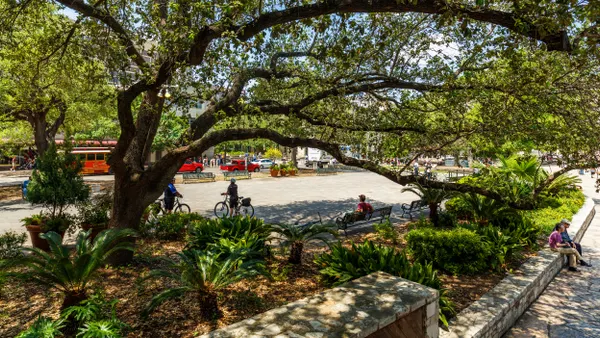The COVID-19 pandemic has forced leaders from San Francisco to New York to reevaluate the utilization of public roads while considering what a future without private cars might look like in dense urban areas.
In Manhattan, 30% of public space is devoted to roadbeds, but less than half of Manhattanites are able to use that space, Ruchika Modi, managing principal at the Practice for Architecture and Urbanism (PAU), told Smart Cities Dive. PAU recently unveiled a "N.Y.C. ('Not Your Car') proposal" to illustrate the different ways that Manhattan roads can be be used to re-appropriate public space back to the people.
"There’s an assumption among the general public that streets are for cars, but when you stop to think about it, streets as a space predate the invention of the automobile by thousands of years," PAU Senior Associate Skylar Bisom-Rapp told Smart Cities Dive. "And even in a relatively young city like New York, if you look back at the history… they weren’t meant for private vehicles."
The design renderings include protected bike lanes, green space, public art installations, bike service centers, dedicated bus lanes, homeless service outreach locations, sidewalk expansions and more. The plan is designed around equity, as well as the current environmental and public health issues that Manhattan — and much of the rest of the country — is experiencing, according to Modi.
The designs are meant to be realistic and actionable. Much of the plans involve repainting the stripes on streets or adding a concrete barrier between bike lanes and vehicular traffic, she said.
Although the renderings are purely a proposal, PAU has worked with the city before and was selected in 2018 by the New York City Economic Development Corporation to lead "the Master Plan effort" for Sunnyside Yard in Queens. That plan, which will take decades to reach full implementation, includes a transportation strategy that prioritizes pedestrians over private vehicles, calls for 100% affordable housing and is "anchored by a central greenway lined with social infrastructure."
For smaller cities that might be interested in implementing similar alternative street-uses, they should first consider density and existing transportation options for residents, according to Modi. A city "has to provide alterative means of transportation to the public, before they decide to remove private cars," she said. Some of those solutions could include adding protected bike lanes or more micromobility options.
Ultimately, it's about making the space more equitable for the people who live in the city, she said.
PAU shared the following renderings with Smart Cities Dive to offer a snapshot of what New York streets could look like without private cars:












